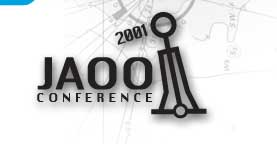<bigwig> service: jaoo
Bio:
Kim Harding Christensen is one of the founders of Eastfork Object Space (EOS) A/S and is now the
Chief Architect at Trifork Technologies, a daughter company of EOS. Kim holds a degree in
M.Sc.Computer Science and is also both Sun Certified Java Architect and Sun Certified Java
Programmer. Kim has been speaker on a number of lectures and conferences in object oriented system
development and participated in a number of international conferences in object oriented system
development.
Special skils
- Meta-data & reflection: Meta-data are data, used to describe data. Using meta data and reflection it
is possible to build systems that can analyse its own state and, as a result, optimize itself for a given
situation. This principle has been used with great succes in the EOS Java 2 Enterprise Edition
application server.
- Active object models: A more easy way of using meta data og reflection is active object models. An
active object model is an object model which contains meta information about itself, so that it can
chance itself during execution. In enterprise systems active object models can be used to introduce new
products and changes in business procedures during runtime (often without changing code).
Time-to-marked of new features can be reduced from months to a few days or hours.
- Object oriented methods: Worked with almost all aspects of object orientation: Object oriented
programming (Java, C++, Objective-C, CLOS, Dylan, Smalltalk, BETA, Eiffel, Python, including
designing and developing 2 new object oriented programming languages); Analysis & design methods
(RUP, OMT, Booch, VMT, Fusion & BON); Object oriented databases; Distributed systems
(CORBA, RMI, developed LINDA support to Objective-C)
Tutorial, Friday September 14
Enterprise Development J2EE 1.3
Abstract
This tutorial gives a practical introduction to J2EE application
programming using J2EE v1.3.
The first part of the tutorial contain a walk through of the new
features in J2EE v1.3:
- EJB: local invocation, CMP, EJB QL and Message Driven Beans
- J2EE Connector architecture
- Web: Servlet filtering and Application Event Listeners
In the second part of the tutorial, we will discuss J2EE best practices,
approaches to designing, building, and
working with J2EE. By using these best practices, you will avoid
common pitfalls that others have experienced in the past when building
J2EE systems.
|
|

|



